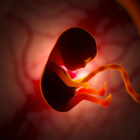Depression goes beyond mere sadness or a temporary feeling of being “down.” It is the leading cause of disability worldwide, according to the World Health Organization (WHO). It is a widespread and complex condition that affects millions of people worldwide (around 280 million people) and can significantly affect an individual’s quality of life, altering their thoughts, feelings, behaviors and physical health. Apart from apathy, sadness, lack of interest or hopelessness, it can also manifest itself through physical symptoms such as changes in appetite, sleep disturbances, fatigue and difficulty concentrating. There is no cure for depression.
There are 6 types of depression, Stanford scientists discoverMidjourney/Sarah Romero
In essence, the signs of depressionwhich may vary from patient to patient, can be: persistent feelings of sadness, emptiness or hopelessness, loss of interest or pleasure in activities that were previously enjoyed, changes in appetite and weight (whether loss or gain), alterations (insomnia or sleeping too much), fatigue or lack of energy, difficulty concentrating, making decisions, or remembering things, feelings of worthlessness or excessive guilt, physical symptoms such as headaches, stomachaches, or other unexplained aches and pains, or even dark thoughts of death or suicide.
But not all depressions are the same and now, a team of scientists from Stanford University has presented research in which they have identified up to six different types of pressure by combining brain images with machine learning. The results reveal six subtypes of depression, which could revolutionize the treatment of depression and each of them must be treated differently.

There is no single type of depression
This fits with the fact that, for some people with depression, finding the right treatment or drug can be a tedious, almost trial-and-error process, which can even worsen the symptoms of the illness. Even despite prolonged treatments, many people, Up to two thirds of those who suffer from it cannot completely relieve their symptoms.. Something doesn’t fit.
“The goal of our work is to figure out how we can do it right the first time,” explained Deanne Williams of Stanford Medicine. “It’s very frustrating to be in the depression field and not have a better alternative to this one-size-fits-all approach.”
MRI of a brain that has shrunk due to the death of neurons that cause deposits of ß-amyloid protein.AGE
To identify these six variants within depression, the researchers used brain imaging combined with machine learning that They found six “biotypes”. Specifically, they used functional magnetic resonance imaging (fMRI) to scan the brains of 801 participants diagnosed with depression or anxiety and with an average age of 30 years. All of these brain scans were carried out both at rest and while performing tasks designed to assess the cognitive and emotional function of the experiment volunteers. Then, they used the artificial intelligence through machine learningin order to identify different patterns of brain activity and connectivity corresponding to different biotypes of depression.
“To our knowledge, this is the first time we have been able to show that depression can be explained by different alterations in brain function,” Williams said. “In essence, it is a demonstration of a personalized medicine approach to mental health based on objective measures of brain function. The goal of our work is to discover how we can do it right the first time. It is very frustrating to be in the field of depression and not having a better alternative to this one-size-fits-all approach.”
BrainMidjourney/Sarah Romero
What are the 6 types of depression?
The six biotypes of depression the researchers found include: one characterized by hyperactivity in cognitive regionsassociated with more anxiety, negative prejudices, threat dysregulation and anhedonia (lack of interest in life experiences) than other biotypes.
Another biotype was marked by higher levels of brain connectivity in three regions associated with depression and problem solving. The authors, who publish their results in the journal nature medicine, They found that their symptoms were best relieved with behavioral talk therapy, which teaches skills to better deal with daily problems.
Another type of depression was clearly distinguished by presenting lower levels of activity in the brain circuit that manages attentionwhich was associated with fewer chances of improving with therapy.
In the same way, another of the biotypes was related to a lower activity in cognitive regions of the brain and less connectivity in emotional regions, meaning that the volunteers had difficulty responding to cognitive information and regulating negative emotions. They also found another characterized by a high emotional reactivitybeing much more affected by emotional stimuli such as their own emotions or people’s facial expressions than the rest.
The last biotype of depression was quite surprising, since did not differ from people without depression as for the reference in brain scans, which could point to a type of underlying depression not yet classified.
Neural networks of the brain. Photo: Istock
References:
- Tozzi, L., Zhang, X., Pines, A. et al. Personalized brain circuit scores identify clinically distinct biotypes in depression and anxiety. Nat Med (2024). https://doi.org/10.1038/s41591-024-03057-9
- Cognitive control circuit function predicts antidepressant outcomes: A signal detection approach to actionable clinical decisions. Leanne M. Williams, Jerome Yesavage. Personalized Medicine in Psychiatry. Published:April 30, 2024 DOI:https://doi.org/10.1016/j.pmip.2024.100126


